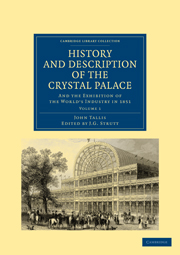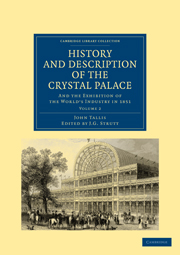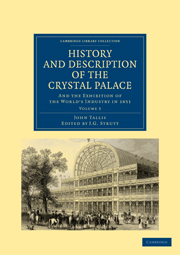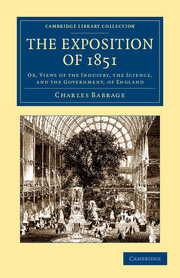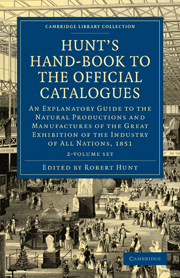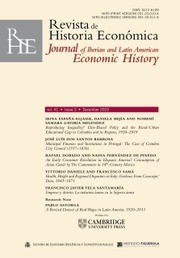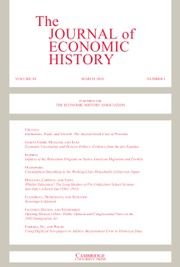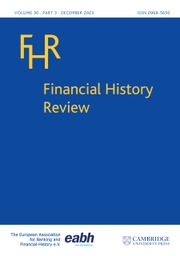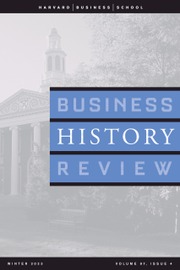History and Description of the Crystal Palace
In May 1851, the doors opened on the Great Exhibition, a celebration of British industry and international trade that spawned numerous imitations across the globe. The scale of the exhibition was immense and publishers responded quickly to the demand for catalogues, guidebooks and souvenir volumes. In a marketplace swamped with exhibition literature, Tallis' three-volume History and Description of the Crystal Palace, originally published in 1852 and reproduced here in the 1854 edition, quickly established itself as the definitive history for middle-class readers. Illustrated with high-quality steel-engraved plates of the most popular and eye-catching exhibits, Tallis' book provides a fascinating contemporary account of this cultural and commercial highlight of the Victorian age, and reveals the mind-set of a society at the peak of its imperial power. Volume 1 describes the preparations for the exhibition and focuses particularly on the 'foreign and colonial' departments and the decorative arts.
Product details
May 2011Paperback
9781108026703
382 pages
297 × 210 × 20 mm
0.91kg
61 b/w illus.
Available
Table of Contents
- Introduction
- 1. Origin of the Exhibition
- 2. The Paxton plan
- 3. Approach of the time fixed for opening the Exhibition
- 4. The opening of the Exhibition
- 5. Preparatory arrangement
- 6. Colonial departments – India
- 7. Sculpture
- 8. Chaucer's dream
- 9. Foreign and colonial departments continued
- 10. Number of visitors
- 11. Foreign and colonial departments continued
- 12. Foreign and colonial departments continued – The United States
- 13. Wood carving
- 14. Discovery of glass
- 15. Precious stones
- 16. Mosaic work
- 17. An early morning visit
- 18. Foreign and colonial departments continued
- 19. Laborious trifles
- 20. Sculpture continued
- 21. Foreign and colonial departments continued
- 22. Industry aided by science
- 23. Ornamental silver
- 24. Letters of M. John Lemoinne
- 25. The potter's art
- 26. Second letter of M. J. Lemoinne
- 27. The application of science to the purposes of humanity
- 28. Sculpture continued – Florence
- 29. Contributions from the Highlands
- 30. Foreign and colonial departments continued
- 31. Stained and painted glass continued
- 32. Edinburgh Review
- 33. The Fine Arts court
- 34. Comprehensive nature of the Great Exhibition
- 35. The fan
- 36. Bookbinding
- 37. The mediaeval court
- 38. Letters from M. Blanqui continued
- 39. Council medals
- 40. Description of technical terms
- 41. Varieties
- 42. Perfumery.

